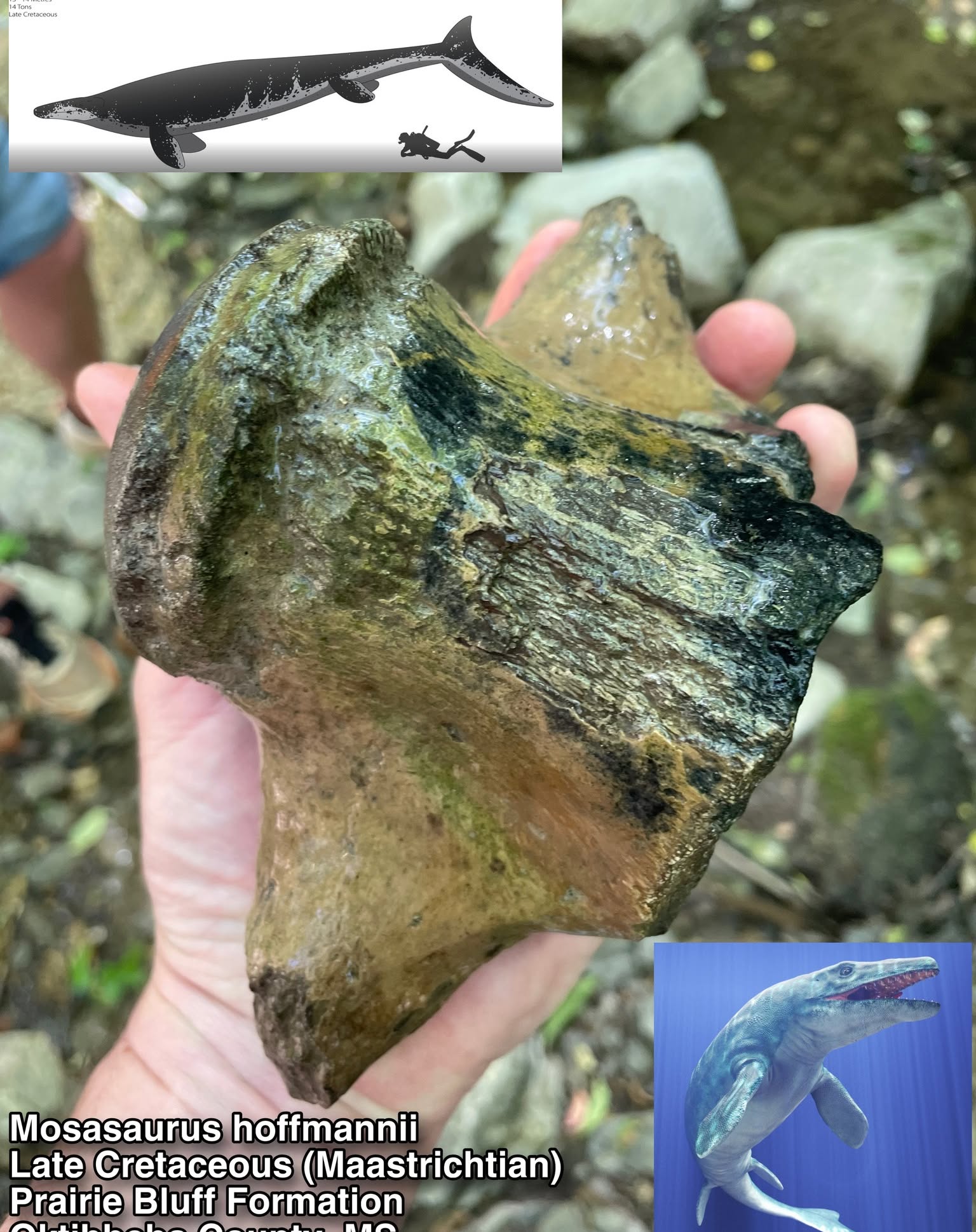
The remains of a giant “sea monster” that once dominated the oceans was unearthed by geologists on a riverbank in the Mississippi River, scientists have said.
Geologists discovered a fossilised single vertebra of the giant sea lizard known as a mosasaur that lived during the late Cretaceous period, approximately between 82 and 66 million years ago.
"This is a true, true sea monster," geologist James Starnes, from the Mississippi Department of Environmental Quality's Office of Geology, told local newspaper Hattiesburg American. “This is about as big as mosasaurs get."
Mosasaurs were apex predators, and at their largest, they could weigh up to 20,000 pounds (9,000 kilograms) and reach lengths of up to 50 feet (15 metres).
"I immediately knew what it was, but was completely awestruck by its size," Mr Starnes told Live Science.

"The feeling you get when you find a fossil, even as a professional, never gets old. But when you find something you have never seen before, the elation can be overwhelming."
The bone of the marine reptile, discovered on April 15, is potentially one of the largest found in the state.
"This is a big animal,” Starnes said. “The maximum (weight) is about 20,000 pounds that this animal could have gotten. This is bigger than most dinosaurs walking around on land."
The bone was discovered in an area that was once completely submerged underwater.
In 2022, another giant species of mosasaur, Thalassotitan atrox, was discovered in Morocco.
The giant marine lizard, described in the journal Cretaceous Research, grew up to 9m (30 ft) in length and is a distant relative of modern iguanas and monitor lizards.
While some mosasaurs evolved to eat small prey, such as fish and squid, and others crushed ammonites and clams, scientists, including those from the University of Bath in the UK, suggest that the newly discovered one evolved to prey on all other marine reptiles.
Mosasaurs disappeared at the end of the Cretaceous period, approximately 66 million years ago, during the K-Pg event, when around 75 percent of all species on the planet became extinct.
While the exact cause of their extinction is not fully understood, it is believed to be related to the aftermath of a massive asteroid impact in the Yucatan Peninsula in Mexico.
When top predators, such as the mosasaurs, disappeared, it opened the way for whales and seals to become dominant in the oceans, the researchers said, and fish like swordfish and tuna also appeared.







